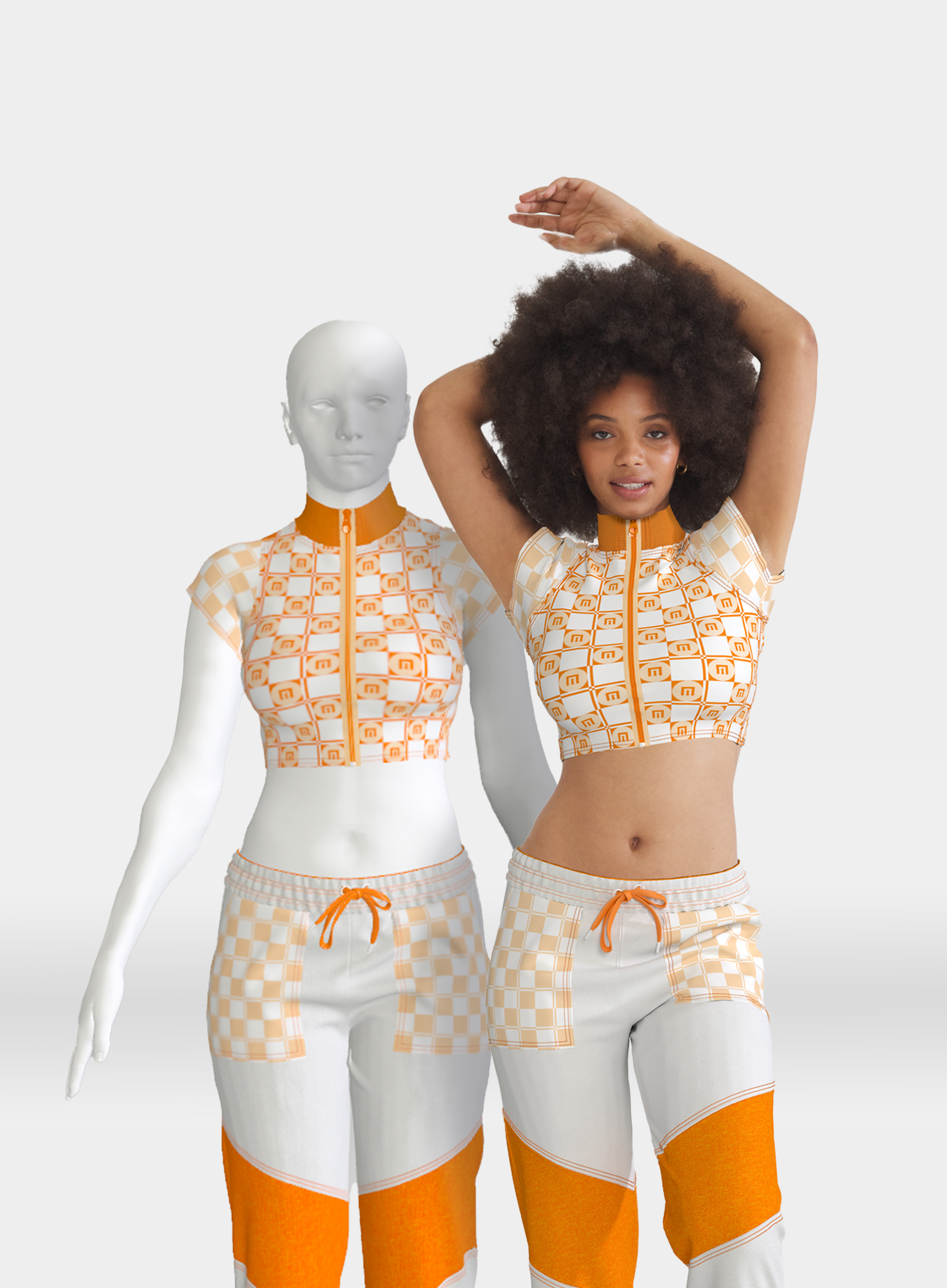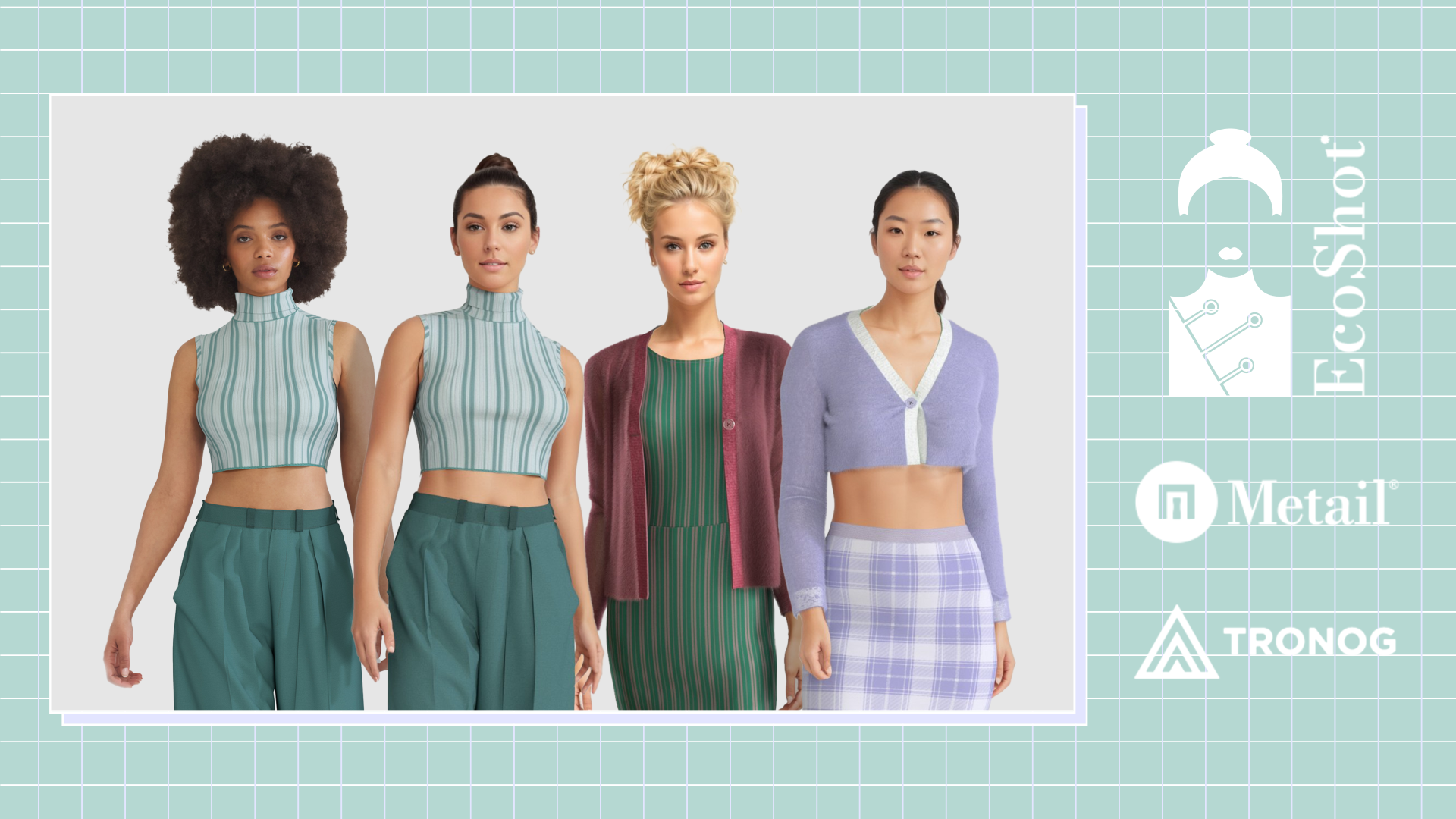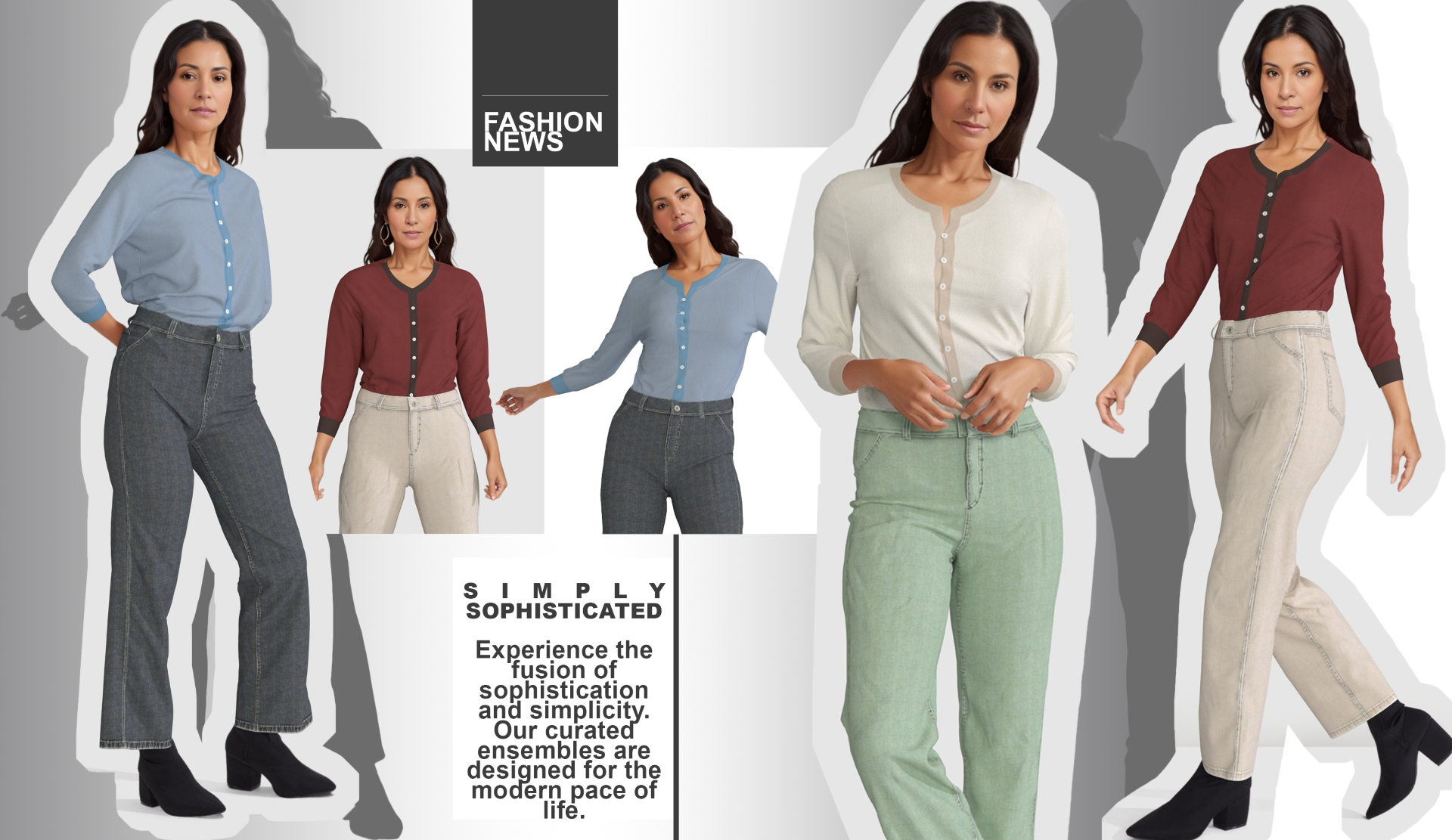Introduction
“Web 3 is the next iteration of the internet - and if web 2 (our current internet) has taught us anything it is that as the internet iterates the whole business world reverberates. This next iteration has already begun, albeit currently in a small form. For everyone involved in the design, creation, sale, resale, renting and recycling of clothes- both physical and digital; this is interesting. Fashion companies from Nike to Farfetch are already investing in web 3 strategies and this goes far beyond experimenting with the metaverse. Therefore, the question we want to ask is what opportunities and challenges could web 3 bring to the fashion world."
What is Web 3?
As early as the 1990s professors had started to speak of concepts which are now forming the basis of web 3. Web 3 goes way beyond the metaverse. The metaverse fits into this equation as one of the ways we experience and interact with the new web . In many ways the aspirations for web 3 are as strong as its underlying principles and technologies. In the words of Ryan Shea, co-founder of Blockstack, the “main aim is to use technology to make the online world a more decentralized place where people can do business “on their own terms”. Harvard Business Review describes it as a “read/write/own version of the web, in which users have a financial stake in and more control over the web communities they belong to”.
Defining features of Web 3 are:
- Decentralisation – information will be stored in various locations, breaking down the massive databases held by technology giants
- Technologies such as Blockchain and AI – web 3 will be built on innovative technologies that enable high levels of security and human-like interactions from computing systems
- Ubiquitous access – web 3 can be accessed by a variety of applications, beyond just phones and computers, therefore enabling the internet of things
To a certain extent web 3 is already here - people are already exploring metaverses, and companies are building the infrastructure to expand it even further. The metaverse, which is perhaps the most spoken about part of web 3, is a set of virtual worlds enabled by the defining features and technologies of web 3. There is a range of possibilities for how this web evolution could take place and current disagreements as to the extent it will be revolutionary, but it is a certainty.
Web 3 and Consumer Behaviour
Consumer affinity towards personalisation, convenience and data present opportunities for brands when engaging with web 3.
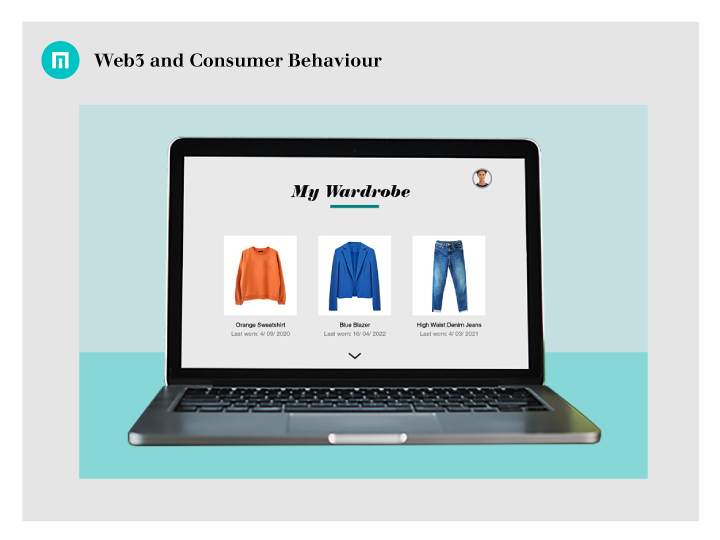
A key reason web 3 strategies need to be given serious consideration is because that is where consumers are going to be. According to a prediction by Gartner, “25% of people will spend at least one hour per day in the metaverse by 2026”. Currently, luxury companies and big fashion houses are at the forefront of creating metaverse strategies and are gearing them towards Gen Z - the early adopters. Given that “60% of these young [Gen Z] shoppers think that brands should sell their products on metaverse platforms”, the focus on this generation makes sense. However, as web 3 develops, the demographics interacting with it will broaden. The potential for experiential shopping in the Metaverse will likely be a big draw for consumers across generational bands. The key takeaway here is the importance of starting with the consumer problem and opportunity to understand how to engage different demographics and consumer types as they move into web 3.
Further, the aftereffects in the change in shopping habits during the pandemic are still being felt. Shoppers were limited to online purchases. Resultingly, they have become more selective and savvier in their decision making; technology enabled free flow of product information and reviews. The decentralised and permissionless aspects of web 3 may act like a steroid injection to this trend. Information gathering is likely to continue being a key aspect of purchasing habits. Web 3 will change the way information flows- who owns it and where it is created. More people will be able to authentically engage in the creation of the web (as it will be permissionless) and the concentration of knowledge in intermediaries will decrease (decentralisation). As Bobby Allen, a technology reporter from NPR notes, “Enthusiasts hope Web3 will mean that sharing photos, communicating with friends and buying things online will no longer by synonymous with Big Tech companies but be done through a multitude of small competing services on the blockchain”. Therefore, it will be important for brands and fashion companies to both follow where their consumers go on web 3 and also create engaging strategies to keep consumers’ attention as a whole new world is created. A decentralisation of transactions may create the need for a more diverse online selling strategy. In our current iteration of the web selling outlets are already beginning to widen. Fashion companies are already using social media platforms like Instagram to sell their goods. Web 3 increases the opportunity for the trend of diversified online selling outlets to proliferate. Brands like Balenciaga, Lacoste and Ralph Lauren are already engaging and selling on gaming platforms. However, there will be a range of use cases and consumer needs that web 3 will create and serve. Although no one can predict the future, a range of potential use cases are listed below:
- Brands create digital and physical twin items- for people who want to dress like their avatar and vice versa. These items could be verified by tokens to demonstrate ownership and authenticity. Increased time spent in visual web 3 spaces may spark this need. Blockchain technologies can make this a reality.
- Consumers and brands create signature looks in web 3 that can be taken across platforms; sold and transferred. Blockchain technology can help power this.
- Sustainability focused consumers could use digitalised versions of their wardrobes to track usage, increase utilisation of their clothes, sell clothes that they aren’t wearing, share wardrobes with people in their community and manage which items they sell/ rent. An increase in visualisation technology and digital/ physical cloth twinning could help make this a reality.
- An increase in personal data ownership could change how consumers choose to interact with brands. Consumers could, for example, disclose certain information to brands on shopping habits in exchange for services like personalised styling recommendations.
- Increased visualisation in the web could proliferate further into the shopping process. Consumers could have avatars that can be used on different sites to make the physical clothes buying process seamless. These avatars could try on clothes to show true fit. Visualisation technology and a more decentralised web could make this a reality.
- As the rental market expands, companies and brands are looking to ensure the provenance of items sold can be verified and authenticated. This can be satisfied by an increase in information about the provenance of clothes and web 3 enabling Information to flow across platforms can help ease the sign up process for new sellers/ buyers who are using multiple platforms.
Web 3 and Environmentalism
Looking at how your technology strategy is affecting your sustainability agenda is crucial to lowering emissions whilst embracing the new frontier of change. Blockchain, Decentralisation and Personalisation provide opportunities for big wins, but look out for electricity consumption and a potential rise in e-waste.
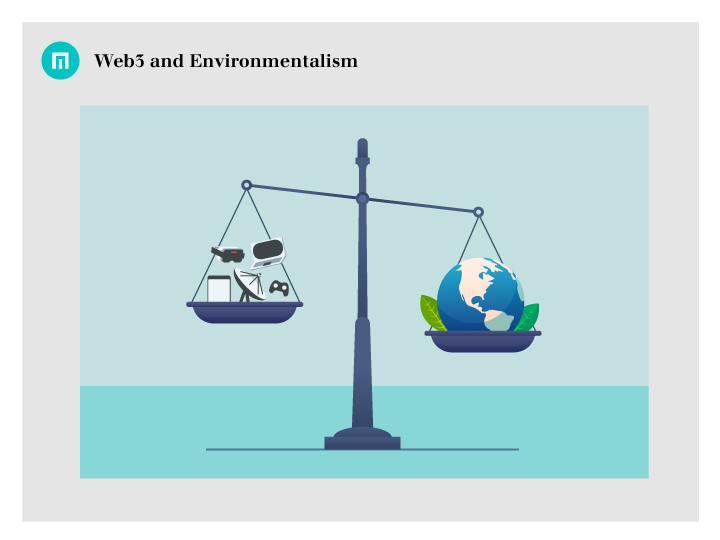
The development of the internet has created billion-dollar markets and changed the shape of existing industries. However, web 2 has taught us that with the realisation of the business opportunities comes complexity around environmental impact. Web 2 enabled a boom in a different model of shopping: e-commerce. Notable tech giants made fortunes off the back going direct to consumer online. Launched as an online bookstore in 1994, Amazon has grown to be the biggest e-commerce company in the world and continues to lead the way in terms of industry operations. Convenience, speed, and personalisation have become the bedrock of customer satisfaction in the online space. These models of operation spread quickly to retail clothing, firstly online only stores such as Zappos appeared. Next pre-existing retailers started to capitalise on the opportunity- setting up operations online. Even luxury retailers came online with the assistance of platforms such as Net a Porter. Online business models have brought both environmental wins and losses- both planned and unintentional. This spectrum of positive and negative environmental impact ranges. The efficiencies brought about by reducing car and land traffic have had a positive impact– Researchers at Oliver Wyman estimates that “offline shopping results in between 1.5 and 2.9 times more greenhouse gas emissions than online shopping”. On the other hand, according to earth.org when consumers opt for same or next day delivery this stat reverses- with online shopping emitting more than offline.
As the web undergoes its next transformation, it does so in a climate of increased environmental concerns. As Harvard Business Review notes: “Virtually all of the world’s largest companies now issue a sustainability report and set goals; more than 2,000 companies have set a science-based carbon target; and about one-third of Europe’s largest public companies have pledged to reach net zero by 2050”. Fashion companies in particular have been scrutinised for sustainability practices. As Mckinsey notes the future of fashion is sustainable brands and circular business models. The question for companies exploring the next frontier of the internet should be “what impact will engaging in Web 3 have on sustainability strategies?”. For sustainability strategists and fashion leaders there is an opportunity now to start exploring how these technological changes will affect their environmental agendas.
The emphasis on traceability, visualisation and decentralisation in the Web 3 agenda provides opportunities for companies to lower their carbon footprint by engaging with new business models and technologies. For fashion organisations this opportunity is specific and unique. As one of the most polluting industries in the world the need for sustainable sourcing and circularity has dominated dialogue for the past decade. The development, democratisation and increasing proliferation of technologies like blockchain, which are central to the development of web 3, offers a technological and secure approach to determining the provenance of raw materials. Blockchain is a system of recording transactions, one of its key benefits lies in the fact that it is designed to be a safe and secure peer to peer network – no middlemen and a high level of trustworthiness. As a result, it is currently the golden child of solutions to supply chain traceability issues. It has the potential to provide trustworthy and traceable databases that can be used to ensure sustainable sourcing. Whilst blockchain has been, and continues to be, experimented with in fashion circles, complexities that can be ironed out by scale have limited its usage. IBM estimates that the use of blockchain in supply chains is still nascent with most organisations running pilots. The increase in use of blockchain in web 3 will help its application across
As an additional plus, Blockchain has the potential to support circular business models and increase the lifecycle of clothing. Whilst the clothing resale market is set to double between 2022 and 2026, there are still real challenges faced by brands and consumers when making attempts to increase the lifecycle of clothes. For example, 3.3% of world goods are counterfeit according to the OECD - consumers are right to be cautious and businesses need to find ways to authenticate their goods so they can be used time and again. As Forbes notes “Blockchain can help fashion brands secure their digital identity” and therefore start to tackle the damage caused by the billion-dollar counterfeiting industry. Ensuring items are authentic at the source has obvious benefits for brands but provides the same benefit for consumers downstream when items are rented and resold. As brands and fashion companies grapple with how to extend the lifecycle of a brand, technologies that can authenticate provenance will be helpful in securing consumer trust and participation in circular markets.
The potential for the utilisation of web 3 technologies to drive sustainable business models extends further than blockchain. A key component of how web 3 is being visualised today is metaverse worlds full of virtual experiences. This reaches far beyond virtual concerts to the potential for consumers to try on and personalise items before they go to be made which could lead to lower returns and waste. Further the rise in mixed physical and digital experiences, such as digital IDs for physical clothing can be a tool for the optimisation of physical wardrobes. Allowing consumers to see their wardrobes in the digital world could - this is all enabled by the content and blockchain heavy nature of web 3. For businesses digital showrooms and shopfronts which can move across platforms in the web will provide more opportunity than we currently have to experience fashion without travelling. Even a small reduction in business travel has a large impact on overall CO2 emissions.
On the other hand, the natural resources web 3 will need to thrive have a lasting impact on our environmental footprint. Encryption, converting data into secret codes, is energy intensive and currently, the majority of energy generated globally is not from renewable sources. As fashion companies are looking at their scope 2 and 3 emissions one key question will be “how is our technology strategy affecting our sustainability agenda?”. Web 3 has already been scrutinised by environmentalists, primarily because of the energy intensity of cryptocurrency mining. Bitcoin, the worlds largest cryptocurrency is estimated as consuming as much energy as Argentina- as 45 million person nation. However, these concerns do not yet fully take into consideration the energy consumption that will be needed to power VR/AR and all of the tools and technologies that will make an image heavy and interactive industry such as fashion a reality.
One of the key tenants of web 3 is ubiquitous access- i.e. the internet can be accessed anytime from anywhere. This will enable a whole host of intelligent gadgets, beyond mobile phones and laptops to access the web. However, the gadgets needed to enable web 3 experiences such as virtual headsets will need to be factored into sustainability strategies to ensure the workplace equipment of tomorrow does not lead to a rise in e-waste as well as intense energy consumption. The speed of technological advancement may eradicate these issues, however brands and fashion companies could benefit from having sustainable technologists in their teams to help choose technologies that are environmentally friendly.
Web 3, The Creator Economy & Fashion
The potential of the creator economy to dramatically shift the way we operate is one of the most discussed aspect of web 3.
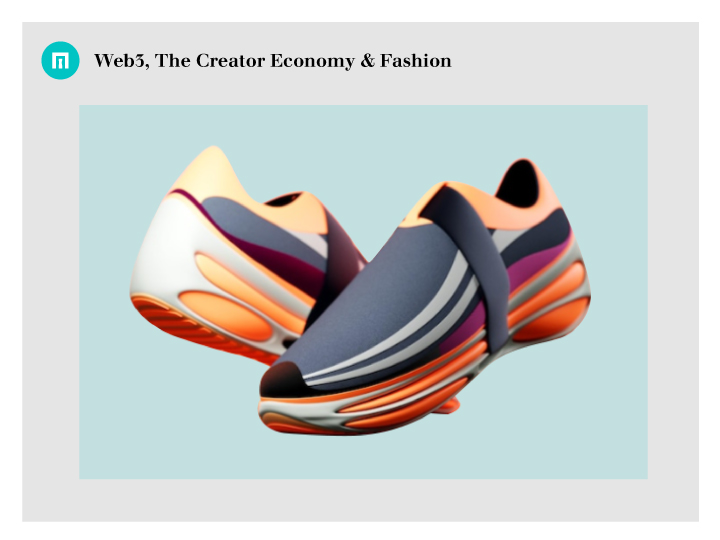
The promise of web 3 is that creators will be able to take back some of the power that platforms currently hold. Namely, rather than platforms controlling the data, algorithms, monetisation models and the audience; in a decentralised web the power will shift towards creators. Even the CEO of one of the biggest platforms in the world, Instagram, has spoken openly about the trend towards this power shift. For fashion and design this could lead to an increase in the amount of people who have a stake in the internet and build everything from digital clothes to digital artwork that can transcend platforms. 3D modelling and visualisation tools already aid the creative process for fashion houses, the 3D modelling market alone is growing by a CAGR of 15%. The cross road of these tools becoming more readily available and the next iteration of the web will likely lead to an exponential rise in “digital” fashion. The innovative practice of designers like Hanifa has shown the mass fashion market the power of visualisation and the potential for experimentation with fashion on the web.
In a web 3, post platform, world, smaller designers and part time creators may find it easier to amass large followings, sell their collections across the web and compete with larger brands. The increase in power of creators and influencers would come from the fact that they are able to take their collections (and followers) across multiple platforms. The potential for collaboration and co-creation could be exponential. Fashions penchant for collaboration works well in a web 3 environment. Creators and digital designers with large followings could work with large fashion houses to co-create, market and sell to their followers. Fashion houses could tap into collective creativity by opening up branded digital tools and designs for creators and consumers to make their own custom designs. Rather than creating these tools in house, fashion companies can partner with existing tooling companies to produce branded content. This would ensure tools are up to date with market trends. The consumer desire for unique shopping experiences could be met by web 3 creatives innovating around the shopfront – allowing people to buy in games, from videos, and any other touchpoint online. However, the risks surrounding collaboration remain- from brand dilution to managing a diverse portfolio of collaborators. These risks are already being felt by brands collaborating with content creators today. Web 3 will bring the next iteration of the challenge, and opportunity, of the creator led economy for fashion brands.
Potential Use Cases:
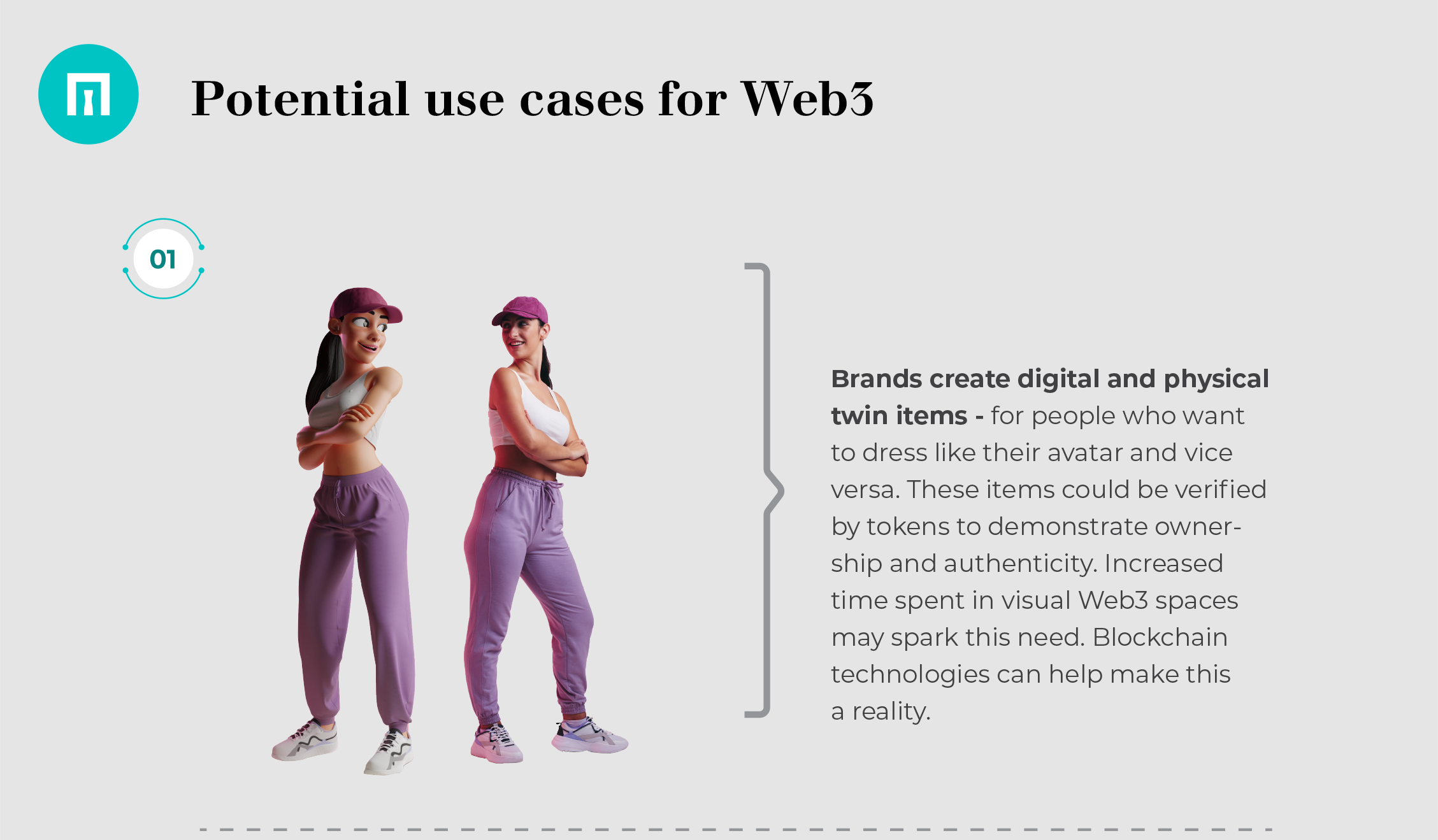
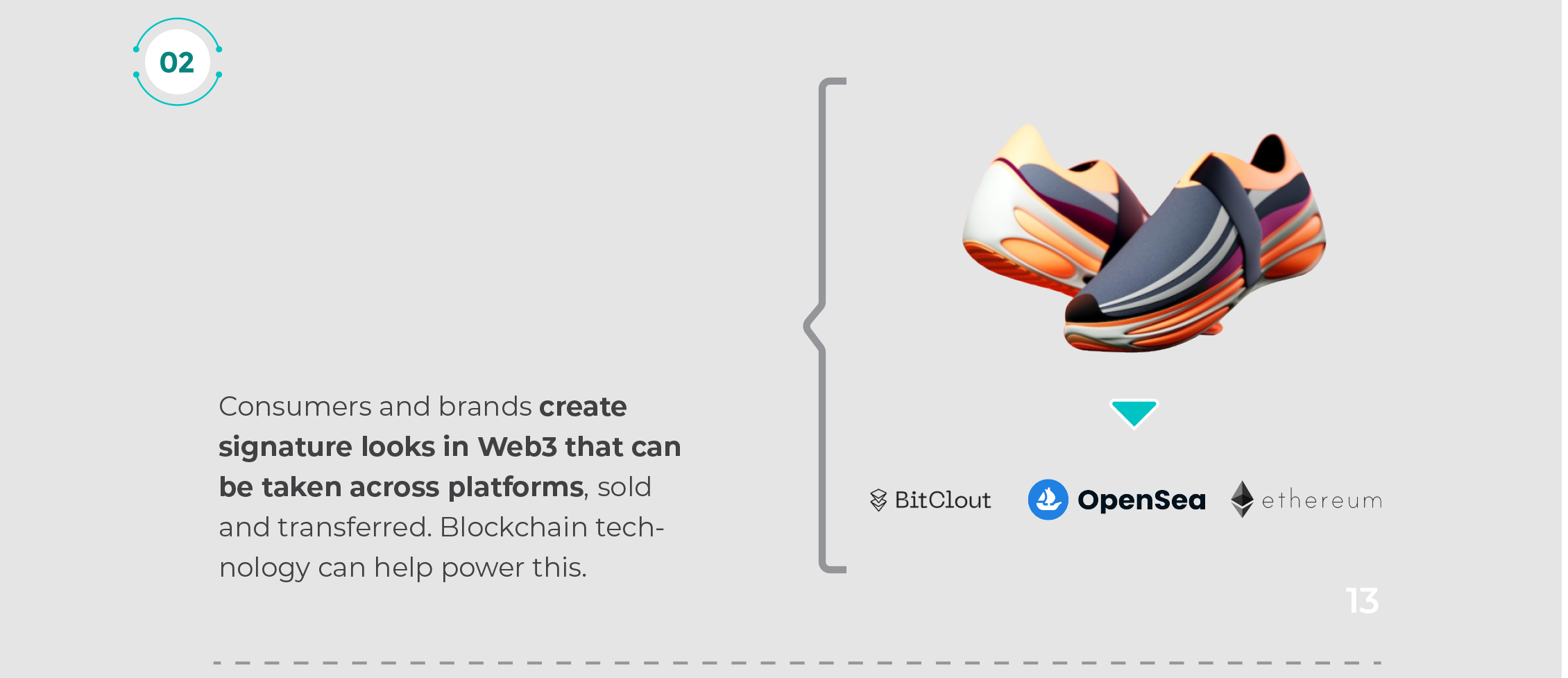
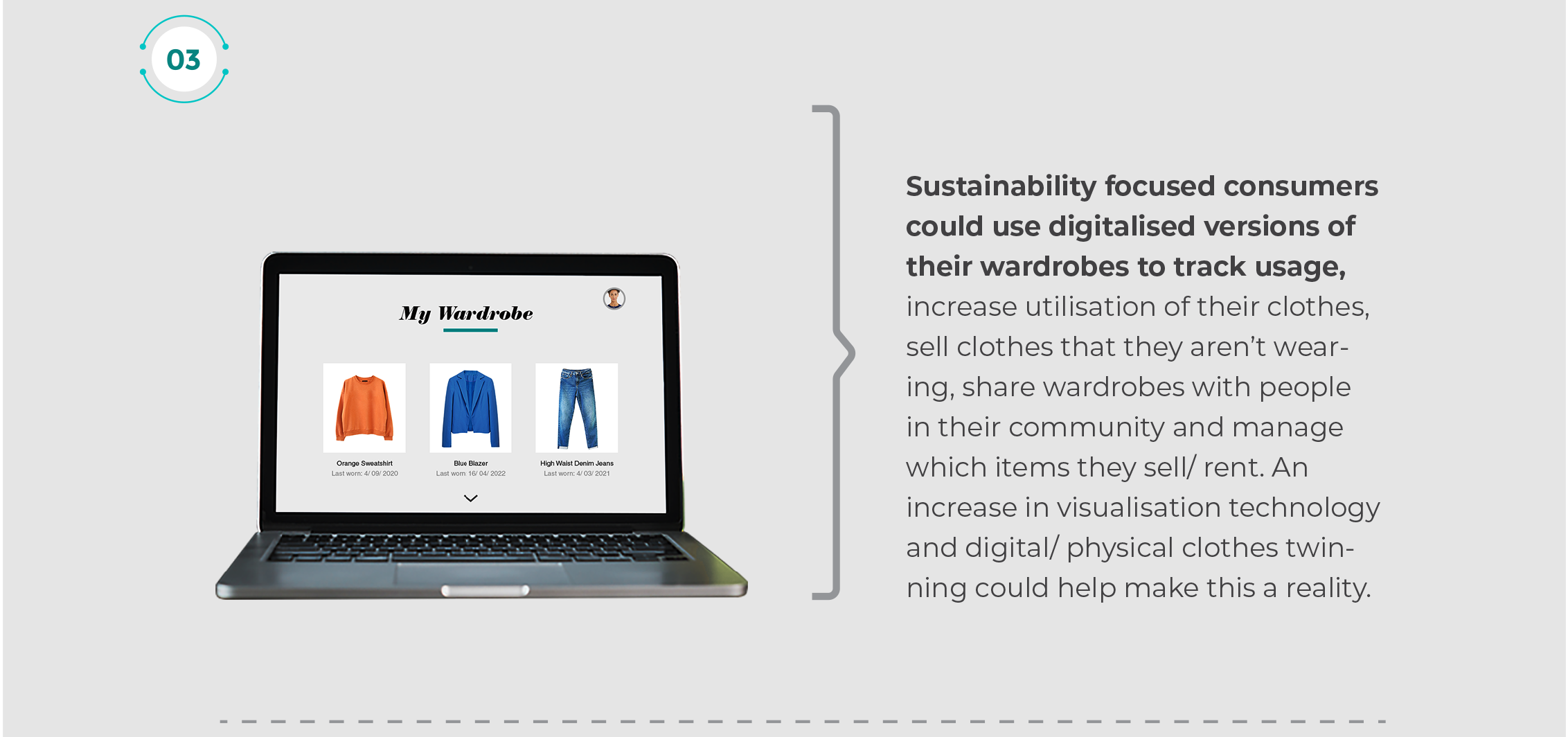
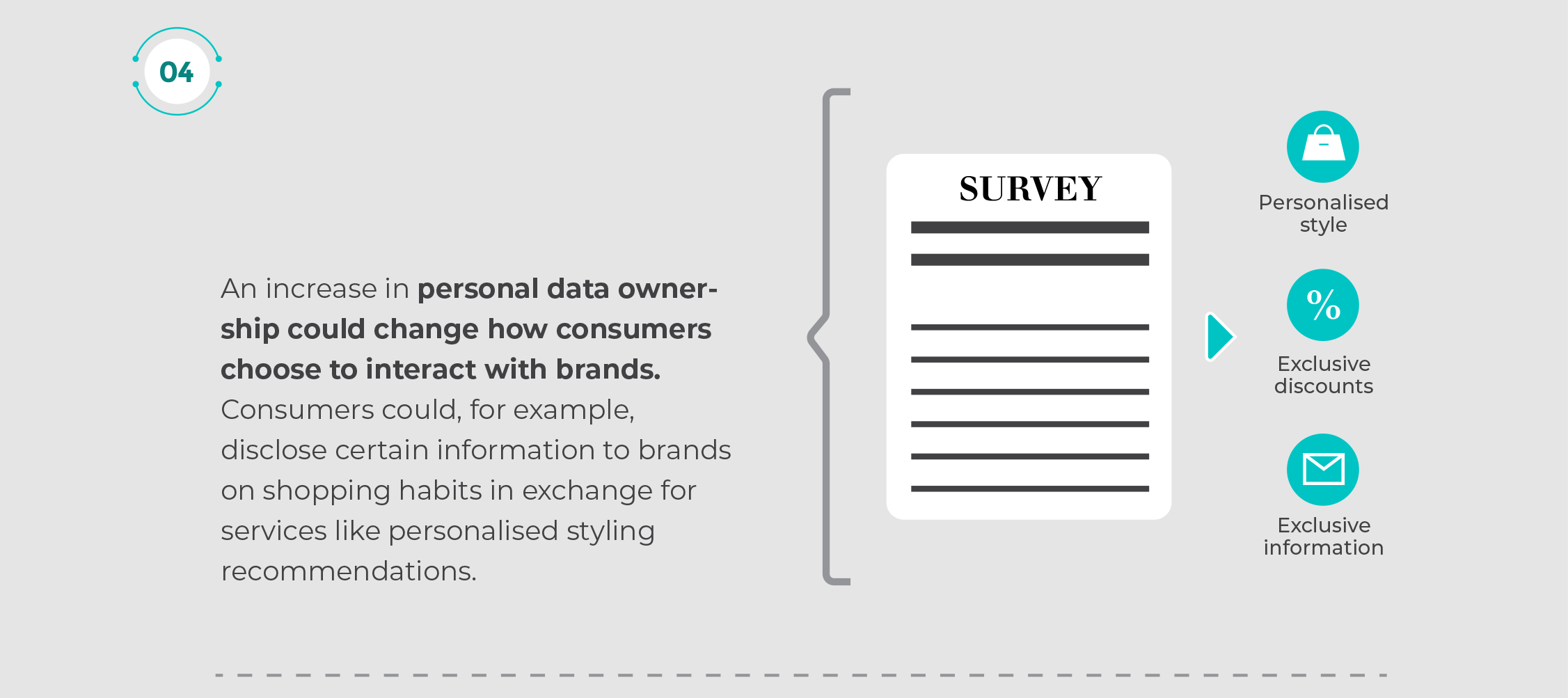

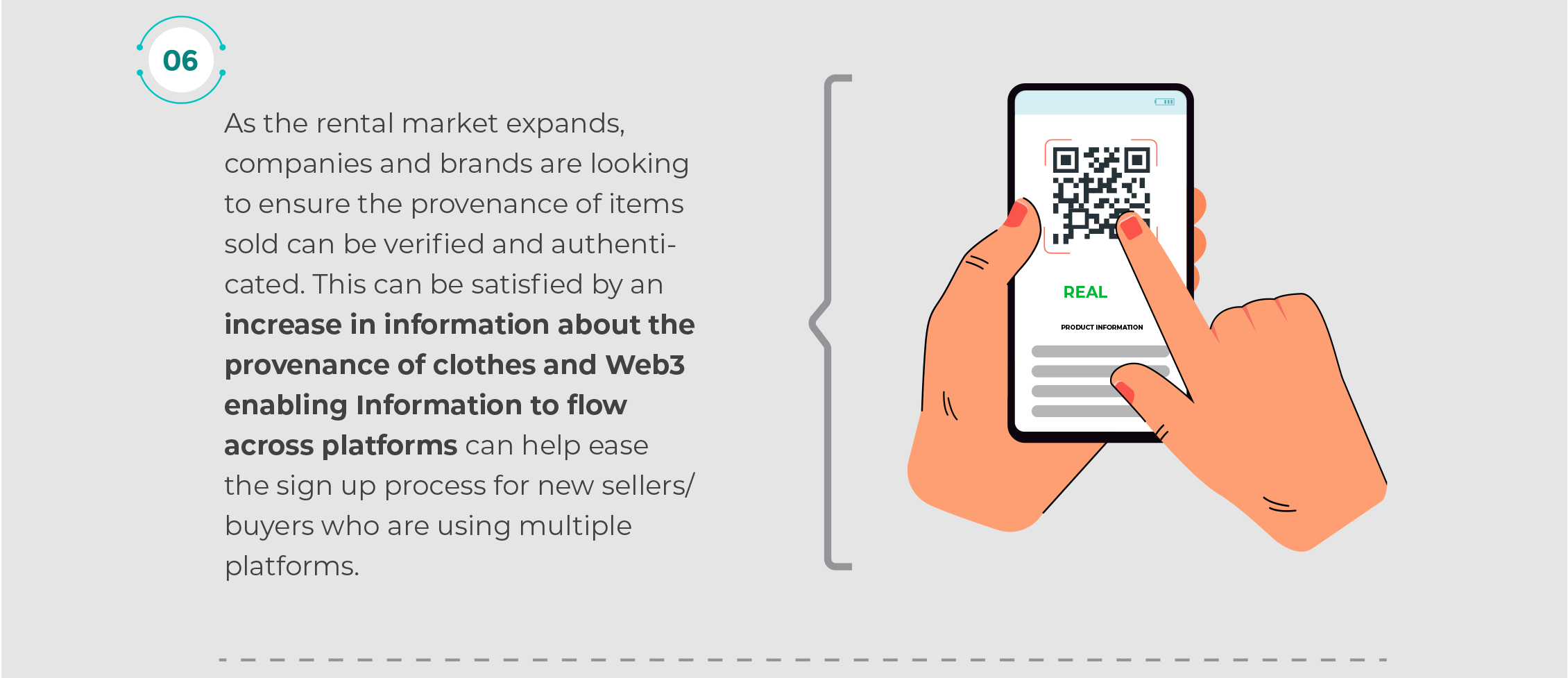
Download the Report (PDF) today and join the conversation on Web 3 in the fashion industry.
